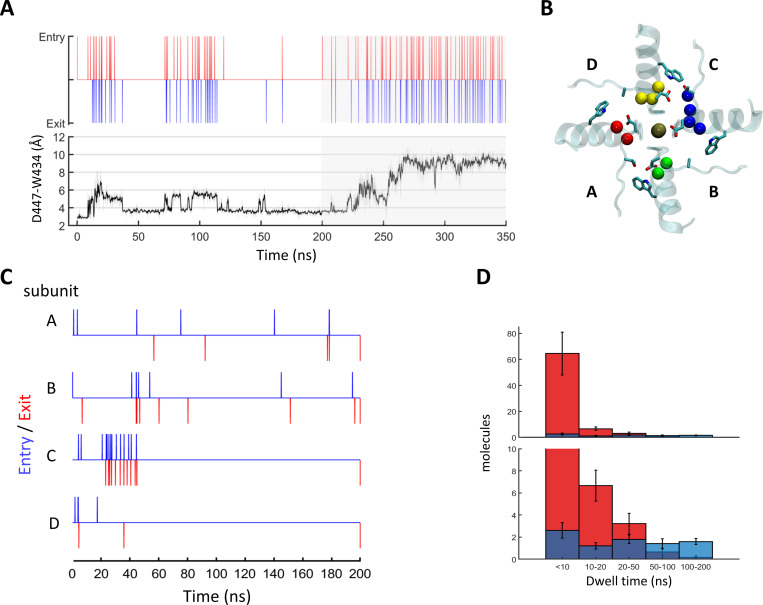Figure S6.
Introduction of T449A affects the behavior of the D-W gates and water transport through the peripheral pockets of Shaker. (A and B) Following a 200-ns unconstrained MD run of a WT Shaker tetramer, T449A substitutions were introduced in subunits B and D, and the system was allowed to evolve for additional 150 ns. (A) Time-series plots depicting water-exchange events (top) versus D447:W434 gate openings (bottom) at subunit C during the mixed trajectory. The 150 ns following the T449A substitutions are shaded in gray. (B) Top view depicting the state of the D447:W434 gates at t = 300 ns. Gate residues are depicted in sticks; pocket water molecules are represented by spheres and are color coded by the domain (A, red; B, green; C, blue; and D, yellow). (C and D) Locking the D-W gates in a constrained conformation prevents the excess water flow induced by T449A substitution. (C) Water traffic through the peripheral pockets of a T449A tetramer in which the D447:Oδ1-W434: Nε1 distances were restrained to 2.8 Å throughout the trajectory. (D) Dwell-time distributions of water molecules within the peripheral pockets compared between the T449A runs with constrained (Table S1; trajectories 13–16, blue) and unconstrained (red) D-W gates. The lower panel is a zoomed-in version of the top panel. The difference between the two distributions is statistically significant (two-sample Kolmogorov–Smirnov test, P = 0.04).

